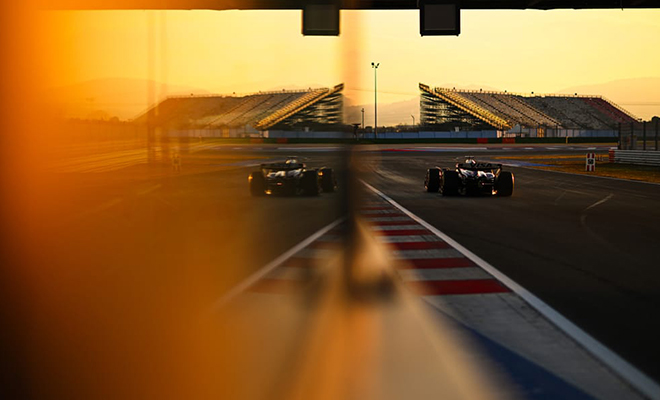The FIA introduces comprehensive guidelines to promote clean racing, addressing overtaking, defense tactics, and track limits.
Where does clean driving begin and end in F1? How to distinguish a ‘hard’ defense from a ‘dirty’ defense during an overtaking maneuver? To what extent is playing with track limits acceptable?
Shedding light on these questions, and many others, is essentially the principle behind the ‘new driving guidelines’, a document produced by the FIA Drivers’ Committee in partnership with the Circuits Commission and the FIA Safety Department.
After consultations with drivers, as well as stewards, the FIA has published this guide, intended not only for F1 but for all motor racing competitions, down to karting.
In essence, it is a set of best practices, with a non-binding aim, designed to enlighten drivers, from the highest level to karting, on proper driving practices – how to drive like a gentleman, respecting the rules…
This document will primarily serve as a reference for young drivers, but even F1 teams could draw on it to call out alleged misconduct during races…
“The FIA Drivers’ Committee – comprising a wide range of experienced, current, and former drivers – worked closely with experts from championships and competitions to gather their insights and feedback to shape the creation of this document. It covers a number of key topics, from driving standards to defensive and overtaking maneuvers, track limits, yellow flags, driver advice, and safety car restart procedures,” the FIA notes.
Alonso Champions FIA Clean Driving Guide
Fernando Alonso, of Aston Martin F1, has advocated for the publication of such a guide, thus welcoming its arrival: “Promoting such guidelines in motorsport is of vital importance. I’ve been involved in quite a few on-track battles over my 23 years of racing across various motor racing categories. Each battle requires understanding and respect among fiercely competitive racers.”
“We need consistency in how drivers attack and defend on the track, as well as in how rules are interpreted across all competitions. I want to promote clean driving among the current generation of drivers and the future ones, who are learning their craft and aspire to have a professional career in the future. Everyone has a responsibility to love racing but to do so fairly. The new FIA driver standards guidelines will be crucial.”
Brendon Hartley, who also contributed to the formulation of these non-binding rules, highlighted the importance of these guidelines for the WEC: “Many endurance drivers participate in different series and races around the world in addition to their main program in the WEC. It is therefore particularly important for us to have a set of universal guidelines to adopt for different series so that no matter where we race, we can expect the same respect among drivers on track, but also the same approach in terms of race direction.”
FIA Unveils New Global Racing Standards
Ronan Morgan, president of the Drivers’ Committee, formerly known as the Drivers’ Commission, explained the significance of these rules for the Federation: “As the governing body of international motor sport, the FIA is responsible for a wide variety of circuit racing championships around the world. Regulating them consistently can thus be a complex task.”
“The aim behind these new driving standards guidelines is to streamline and standardize the protocols of these championships, forming the basis of decisions made by event officials. We want to encourage overtaking while clamping down on dangerous defenses and minimizing the ‘grey areas’ that could previously lead to confusion. The guidelines also emphasize the importance of rigor in rule enforcement, particularly in lower formulas – something we believe is crucial when it comes to the development of junior drivers and safeguarding the future of our sport.”
These guidelines will be presented to the World Motor Sport Council and, starting from January 1, 2025, they will be incorporated into Annex L of the International Sporting Code.
FIA clean racing guidelines F1 2024. FIA clean racing guidelines F1 2024.
- Norris Confident in McLaren’s Post-Bahrain Surge
- Following us on Facebook and Twitter.
